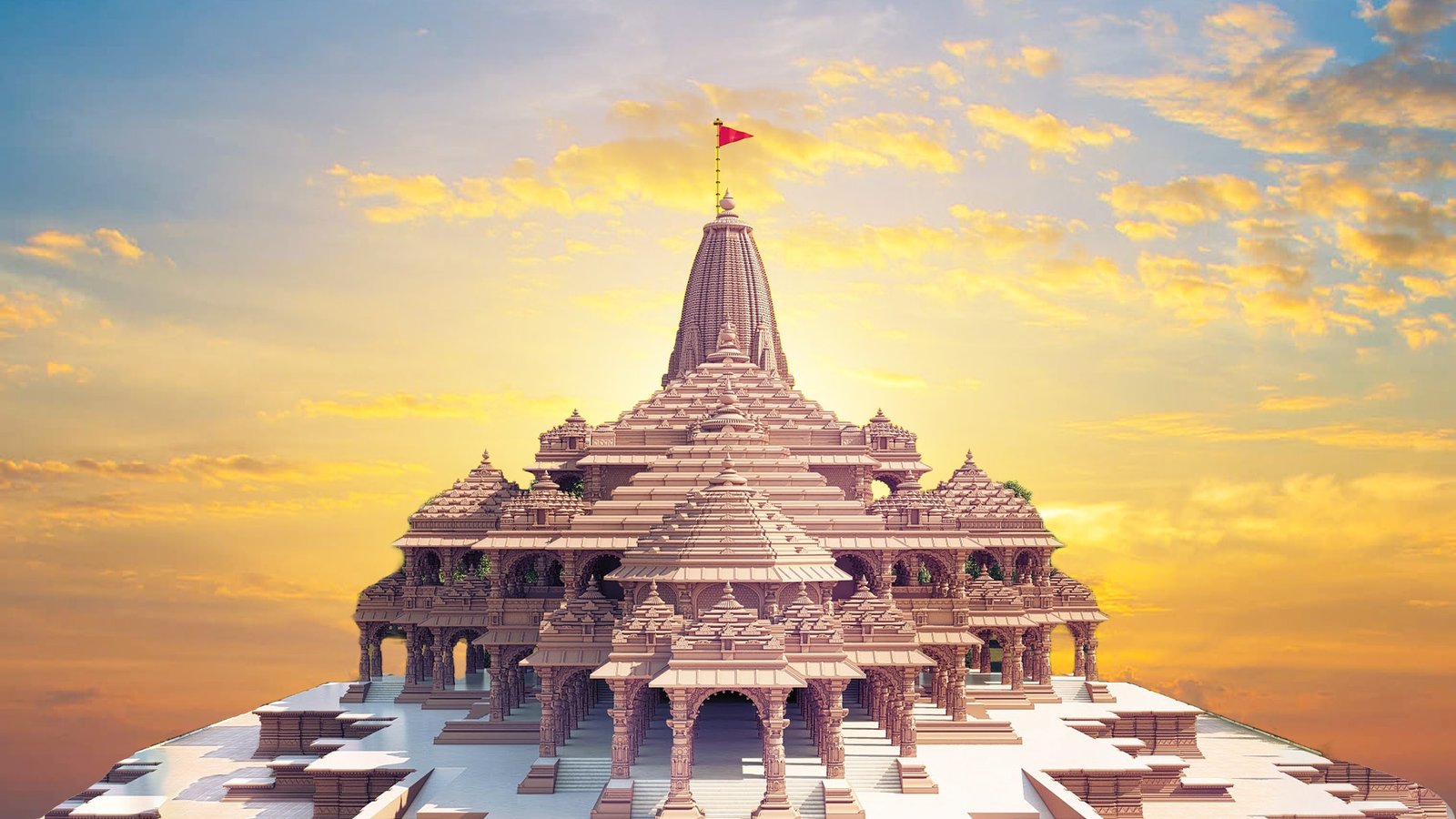With its ancient temples, vibrant ghats, and cultural festivals, Ayodhya tourist places offer a deeply immersive experience for pilgrims and travelers alike. Ayodhya, located on the banks of the Sarayu River in Uttar Pradesh, is one of the seven most sacred cities in Hinduism. Revered as the birthplace of Lord Rama, Ayodhya is steeped in mythology, history, and spiritual significance.
Whether you’re visiting for religious reasons, historical curiosity, or cultural exploration, this guide covers the most iconic and meaningful tourist places in Ayodhya, along with travel tips, seasonal highlights, and itinerary suggestions.
🛕 1. Ram Janmabhoomi Temple
- Significance: Believed to be the exact birthplace of Lord Rama
- Highlights:
- Grand temple architecture with intricate carvings
- Daily aartis and rituals
- Spiritual atmosphere with thousands of devotees
- Experience: Witness the grandeur of the newly built temple, participate in prayers, and explore the surrounding Ramkot area.
🏯 2. Hanuman Garhi
- Significance: A 10th-century temple dedicated to Lord Hanuman, protector of Ayodhya
- Highlights:
- 76 steps leading to the temple
- Idol of Hanuman in a seated posture with Ram and Lakshman
- Panoramic views of Ayodhya from the top
- Experience: Climb the steps, offer prayers, and enjoy the spiritual energy of this hilltop shrine.
🛕 3. Kanak Bhawan
- Significance: A palace gifted to Sita by Queen Kaikeyi after her marriage to Rama
- Highlights:
- Ornate idols of Rama and Sita adorned with gold jewelry
- Beautiful Rajasthani-style architecture
- Peaceful courtyard and devotional music
- Experience: Admire the temple’s beauty, attend bhajans, and learn about its mythological roots.
🍲 4. Shri Sita Rasoi
- Significance: Believed to be the royal kitchen of Sita
- Highlights:
- Ancient utensils and symbolic kitchen setup
- Adjacent temple dedicated to Sita
- Experience: Explore the cultural symbolism of hospitality and devotion in Hindu tradition.
🏛️ 5. Dashrath Bhavan
- Significance: Mythological palace of King Dashrath, father of Lord Rama
- Highlights:
- Vibrant murals and idols of Rama’s family
- Daily devotional activities and storytelling
- Experience: Immerse yourself in Ramayana lore and interact with local priests.
🌊 6. Ram Ki Paidi
- Significance: Sacred ghats on the Sarayu River used for ritual bathing
- Highlights:
- Evening aarti with lamps and chants
- Boating and riverside walks
- Experience: Attend the Sarayu Aarti, take a holy dip, and enjoy the serene river views.
🕌 7. Nageshwarnath Temple
- Significance: Built by Kush, son of Rama, in honor of Lord Shiva
- Highlights:
- Shiva lingam and traditional architecture
- Celebrations during Shivratri
- Experience: Offer prayers and witness the fusion of Shaivite and Vaishnavite traditions.
🏛️ 8. Treta Ke Thakur
- Significance: Houses idols of Rama, Sita, Lakshman, Hanuman, and others carved from a single black stone
- Highlights:
- Open only on Ekadashi (11th day of lunar month)
- Historical and spiritual importance
- Experience: Plan your visit around Ekadashi to witness rare darshan.
🕌 9. Gulab Bari
- Significance: Mausoleum of Nawab Shuja-ud-Daula, showcasing Awadhi architecture
- Highlights:
- Lush rose gardens and Mughal-style domes
- Blend of Hindu and Islamic cultural elements
- Experience: Explore the gardens, admire the architecture, and understand Ayodhya’s syncretic heritage.
🏛️ 10. Ram Katha Museum
- Significance: Chronicles the life and legacy of Lord Rama through art and artifacts
- Highlights:
- Sculptures, paintings, and manuscripts
- Exhibits from various Indian states
- Experience: Learn about the Ramayana’s cultural impact across India.
🛕 11. Valmiki Ramayan Bhavan
- Significance: Dedicated to Sage Valmiki, author of the Ramayana
- Highlights:
- Ramayana verses inscribed on walls
- Peaceful meditation halls
- Experience: Reflect on the epic’s teachings and literary legacy.
🕌 12. Raj Dwar Mandir
- Significance: One of the oldest temples in Ayodhya
- Highlights:
- Ancient idols and architecture
- Quiet, less crowded atmosphere
- Experience: Ideal for peaceful reflection and offbeat exploration.
🏞️ 13. Ayodhya Deepotsav
- Significance: Annual festival celebrating Diwali with record-breaking lamp displays
- Highlights:
- Millions of diyas lit along Sarayu ghats
- Cultural performances and fireworks
- Experience: Visit during Deepotsav for a once-in-a-lifetime visual and spiritual spectacle.
🗓️ Suggested Itinerary: 3-Day Ayodhya Tour
Day 1:
- Ram Janmabhoomi Temple
- Hanuman Garhi
- Kanak Bhawan
- Dashrath Bhavan
Day 2:
- Ram Ki Paidi (morning dip)
- Sita Rasoi
- Nageshwarnath Temple
- Ram Katha Museum
- Evening Aarti at Sarayu River
Day 3:
- Treta Ke Thakur (if Ekadashi)
- Gulab Bari
- Raj Dwar Mandir
- Valmiki Ramayan Bhavan
💡 Travel Tips
- Best Time to Visit: October to March for pleasant weather and festival season
- Local Transport: E-rickshaws, taxis, and walking tours are convenient
- Cultural Etiquette: Dress modestly, remove shoes at temples, and respect rituals
- Food to Try: Sattvic thalis, kachori-sabzi, and temple prasad
- Shopping: Look for Ramayana-themed souvenirs, brass idols, and local handicrafts
🏨 Accommodation Options
- Luxury: Ramayana Hotel, Taraji Resort
- Mid-Range: Hotel Ramprastha, Krishna Palace
- Budget: Dharamshalas near Ram Janmabhoomi and Hanuman Garhi
🌟 Final Thoughts
Ayodhya tourist places offer more than sightseeing—they offer a soulful journey into India’s spiritual heart. Whether you’re walking the ghats, listening to temple bells, or exploring ancient legends, Ayodhya invites you to experience devotion, history, and peace in every corner.


Leave a Reply